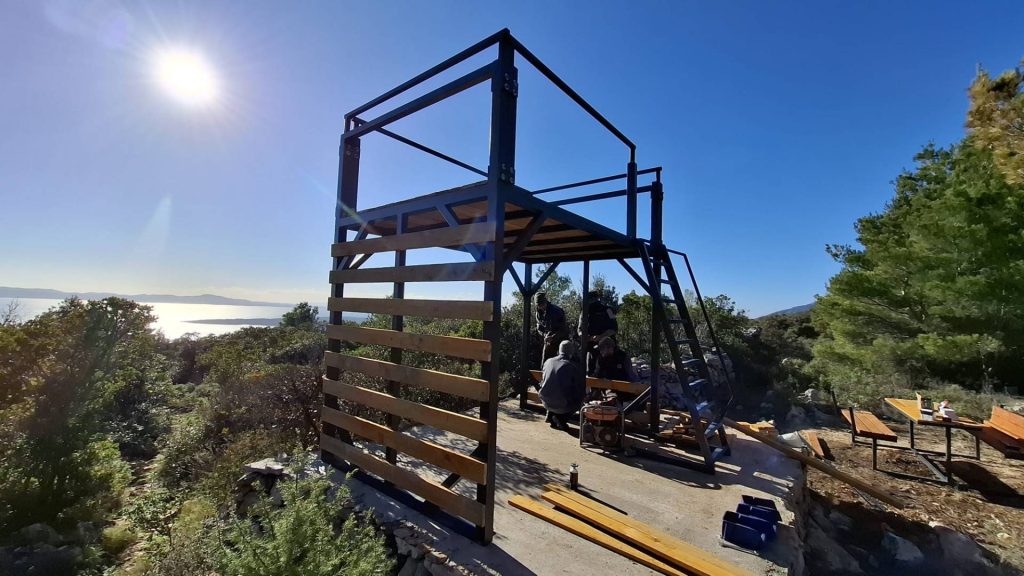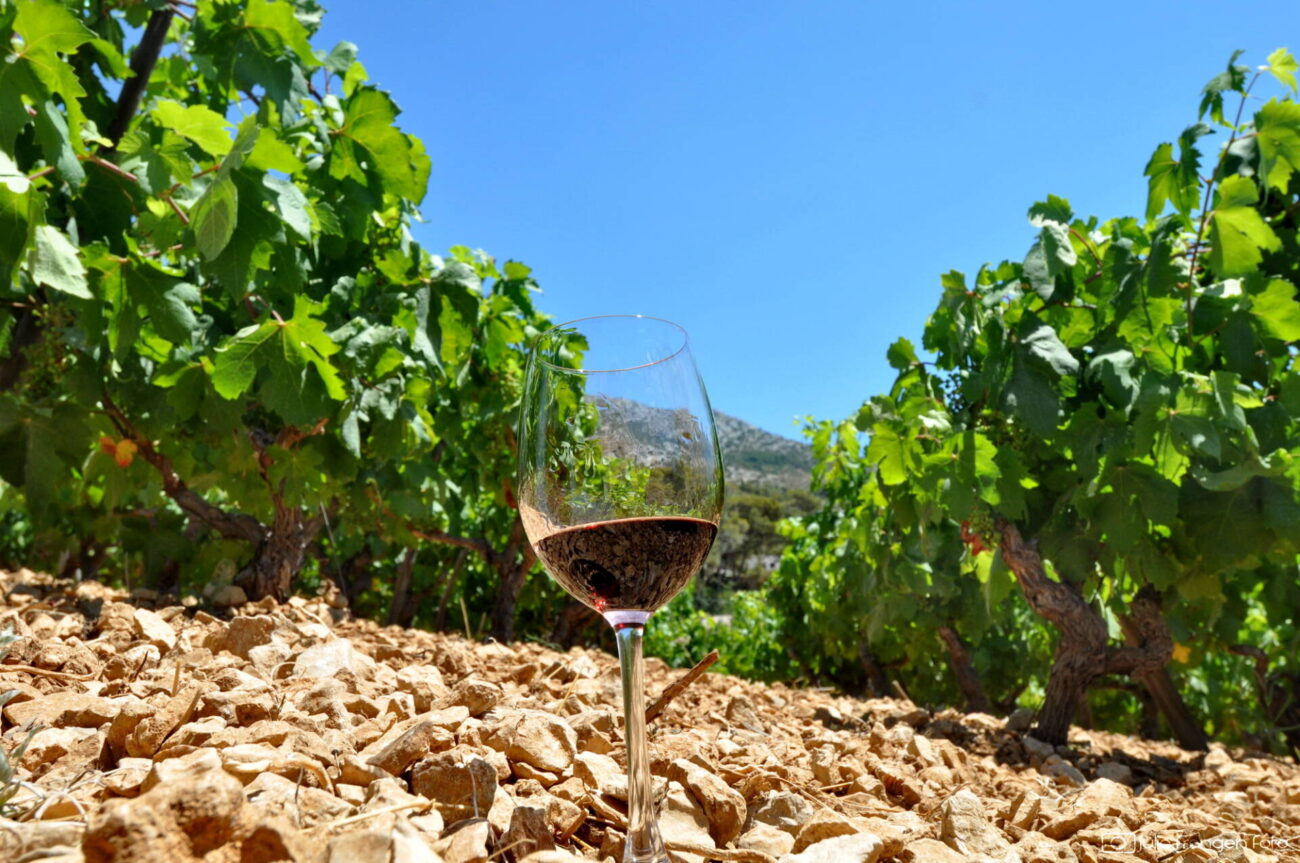
Hvar’s Grape Varieties
Across the whole of Hvar from Sućuraj in the east to Hvar Town in the west, the vineyards teem with a wide range of grape varieties, including plavac mali, bogdanuša, pošip, maraština, prč, drnekuša. The vineyards can be seen in the centre of the island on the UNESCO-listed Starigrad Plain, others on the island’s heights, on its southern slopes or in its sandy terraces. They surround all the island’s settlements.
There are about a hundred different wines on Hvar, representing a wide variety, some of which have gained worldwide fame.
Plavac mali
This is the most cultivated grape in central and southern Dalmatia, and the most important autochthonous red grape variety in Croatia. It is an old variety, dating back some 250 to 300 years. The first mention of the plavac mali grape is to be found in an Austrian Empire book about viticulture dated 1821. Extensive research has shown that the plavac mali grape resulted from crossing the crljenak grape from Kaštela (also known as pribidrag, better known as the Californian zinfandel and Italian primitivo) with the dobričić variety which is grown on the Island of Šolta.
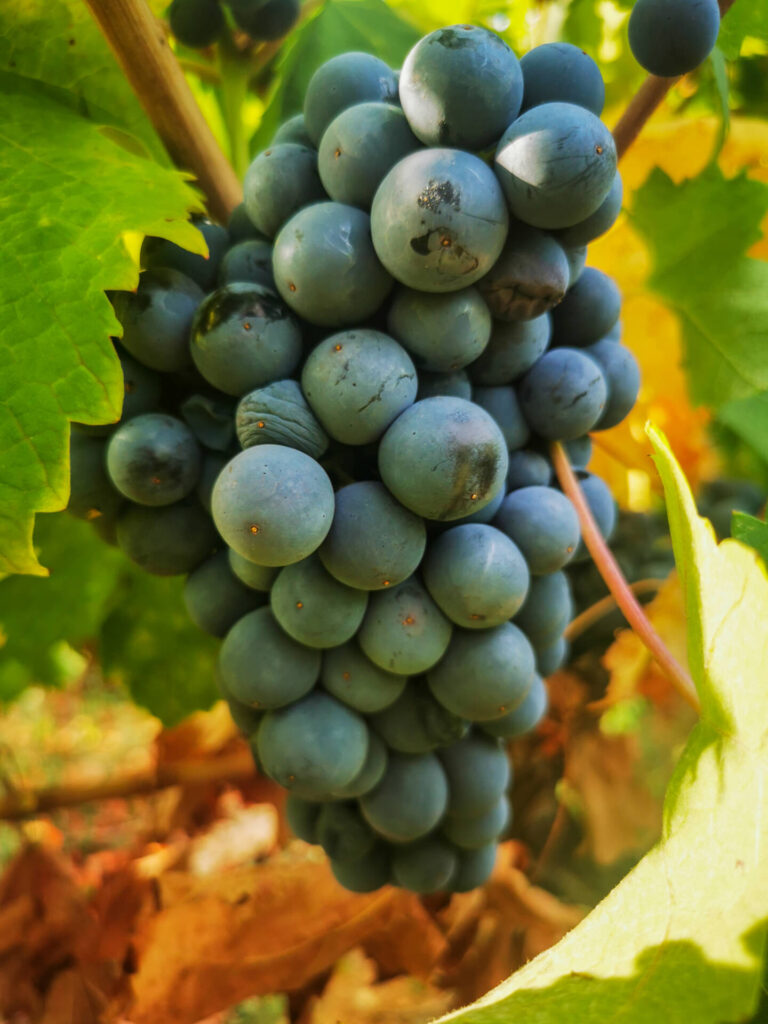
Wines made from plavac mali grapes cultivated on the prized locations of Hvar’s southern slopes are of special quality. They are usually full of tannins, sometimes quite tart, with a high alcohol content ranging from 13% to 16%; most often they are slightly sweet, very rich and full of body. The plavac mali aroma is readily recognizable, exuding a combination of sweet notes or even cooked fruit with light scents of cherry, blueberry and dried figs. The aromas become even richer if the wine is left to mature in oak barrels, after which scents of chocolate, coffee, vanilla and pepper can be detected.
The wine is a purple-red colour with blue reflections when it is young, becoming a very deep ruby-red when it matures.
Plavac mali wine is best drunk at a temperature between 16° and 18° centigrade. It is recommended as an accompaniment to grilled fish, red meat, game, Dalmatian smoked ham (similar to Italian prosciutto) and cheeses..
Drnekuša
Drnekuša is an autochthonous red grape, grown mainly on the islands of Hvar and Vis. The local Hvar name is darnekuša, and it is said to have been grown on the island since the long past.
On Hvar it is cultivated mainly on the UNESCO-listed Starigrad Plain (Ager, Hora) and the area known as Vor (the island’s uplands). The Starigrad Plain has retained its basic field layout since the 4th century BCE, from the times when the Ancient Greeks cultivated the region.
Drnekušagrapes are used in various blends, including for the dessert wine prošek, but they can also be made into a high quality wine in their own right. Wine made from drnekuša grapes is less strong than plavac mali wines, with a milder flavour, lighter colour and aromas of strawberry and ripe cherry.
Its recommended drinking temperature is 16° – 18°C, and it is best paired with light foods, risotto, pastas and vegetarian dishes.
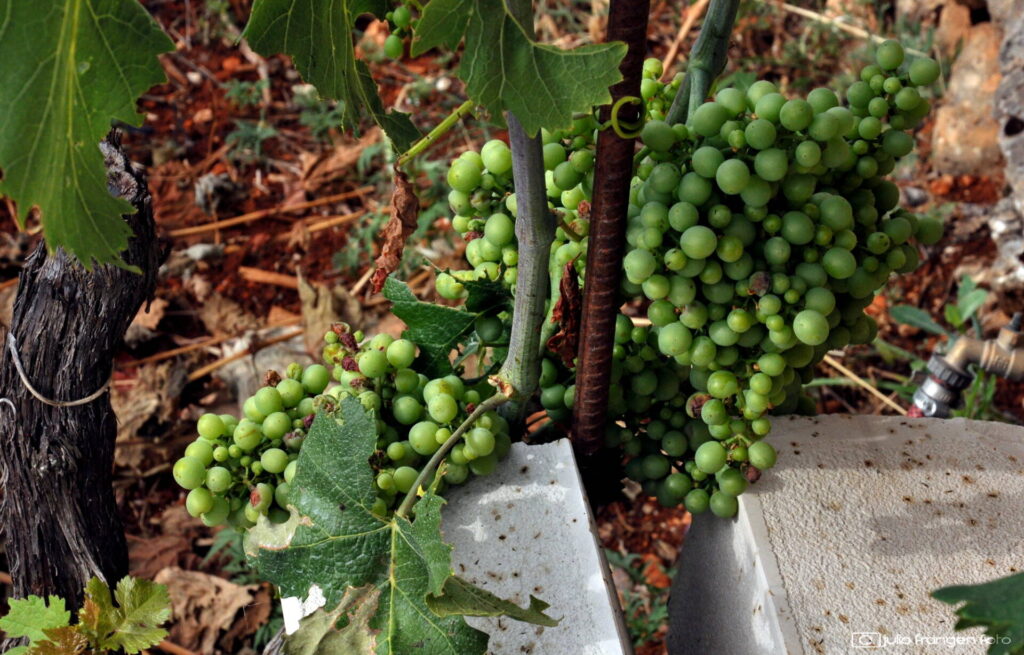
Bogdanuša
Bogdanuša is a white autochthonous grape variety grown on Hvar, mainly in the Starigrad Plain between Stari Grad and Jelsa. Local lore has it that wine made from bogdanuša grapes is exceptionally high quality and health-giving, and in times past it was mainly drunk on religious feast days, living up to its name, which means ‘God-given’.
Wine made from Bogdanušagrapes is golden-yellow, dry, with a citrus flavour. It is recommended to be drunk chilled to 10 – 12°C, paired with white fish, shellfish, crustaceans, and risottos.
Prč
Prć is a Hvar grape variety, which yields high-quality dry white wine with a particular flavour. It is golden-yellow, of firm taste, with a specific muscat aroma.
Writing in the 19th century, a well-known ampelograph called Stjepan Bulić attributed aphrodisiac qualities to the Prč grape and praised Prč wine for its undisputed high quality
The name ‘prč’ is derived from the grape’s small, compressed (prčasti in Croatian) structure.
Wine from prč grapes goes well with white meat, fish and seafood, and should be chilled to 12°C.
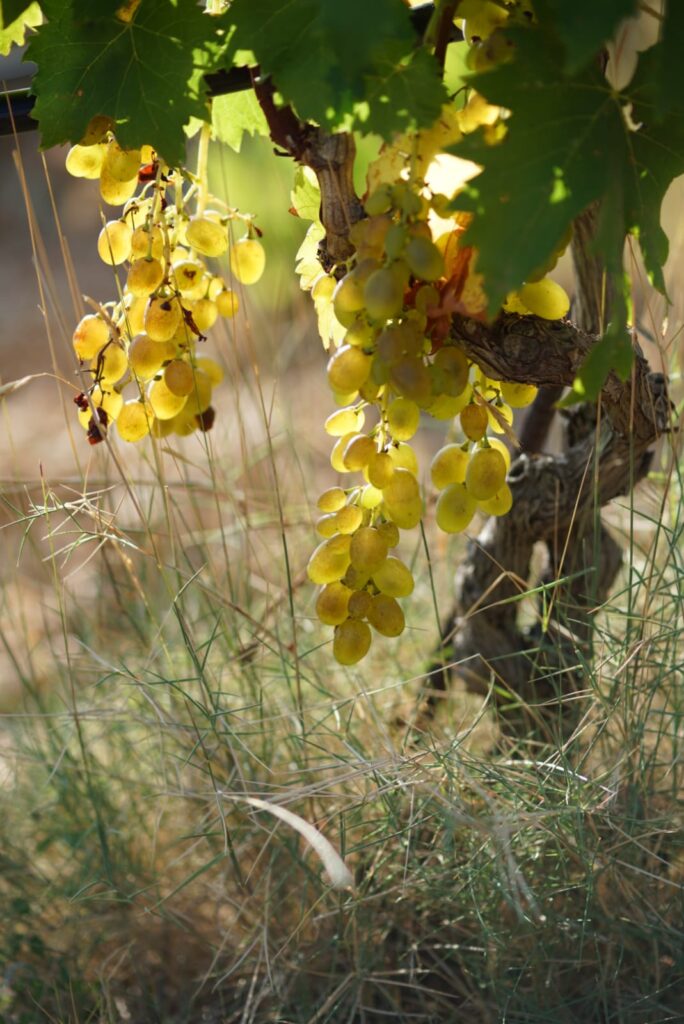
Maraština/Rukatac
Maraština (also known as Rukatac, Maraškin, Mareština, Krizol or Višana) is considered to be an autochthonous Dalmatian grape variety, although it is identical to the Italian Malvasia lunga. The wine colour varies from greenish-yellow to golden-yellow, and it exudes aromas of fresh citrus fruits and drupes. It should be chilled to 10 ~12°C and eaten with white fish, veal cooked under the bell and hard cheeses.
Pošip
Pošip is a white Dalmatian wine, golden-yellow in colour, alcohol content 13 – 14 %. Its aroma is of dried apricot and fig. The recommended drinking temperature is 13 – 14°C, and it is excellent with white meat, fish and shellfish.




